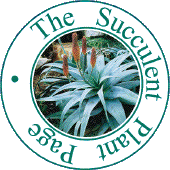 
Glossary of Botanical TermsTo locate the word in which you are interested:
|
A B C D E F G H I J K L M N O P Q R S T U V W X Y Z
Click on a letter to see definitions of all words beginning with that letter.O
Ob - a prefix to another structural descriptor of a part, indicating attachment in the opposite or inverse way to that expected from the rest of the descriptor. Hence obovate = ovate but attached at the narrow end.
Obconate - conical with the attachment at the apex of the cone.
Oblanceolate - lanceolate but attached at the narrow end.
Obligate - compulsory, essential, unable to exist under alternative conditions.
Oblique - in a diagonal position.
Obovate - ovate or ovoid but attached at the narrow end.
Obsolete - not developed.
Obtuse - with an angle greater than 90 degrees and less than 180 degrees, blunt.
Offset - a plant or plants growing from a side-shoot, rhizome or tuber that remains connected to the main plant, often easily removed for propagation.
Omnivore - an animal that eats both plants and animals.
Old World - coloquial- Europe, Africa and Asia.
Ontogeny - sequential development of an individual through all its stages.
Opposite - parts of a plant, such as leaves, arranged in pairs on opposite sides of the stem.
Orbicular - round and flat or spheroidal.
Order - a taxonomic grouping below Class and above Family. A taxonomic Order contains one or more Families.
Organ - a distinct and visibly differentiated part of a plant such as a leaf.
Organelle - a distinct sub-cellular structure, usually with a specific function and compartmentalised within its own membrane.
Organic -
i. of a mainly carbon-based molecule or chemical or chemistry.
ii. a style of agriculture where synthetic pesticides and fertilisers are not used.
iii. of food produced by organic farming methods.
iv. a marketing ploy to sell sub-standard fruit with wormholes at an inflated price.
See also: Inorganic.
Organism - a complete, living individual member of a species.
Osiris - ancient Egyptian god of vegetation, credited with introducing the skills of agriculture to the Egyptians. He became the god of the dead and the underworld, following his slaying by his brother Set and restoration to life by his wife and sister Isis. Osiris is sometimes depicted with green skin in paintings or in statues made from green stone, reflecting his aspects of agriculture, vegetation, fertility and resurrection. He was recorded as the first to make mankind give up cannibalism and credited with introducing culture of the vine and fermentation of its fruit to produce wine. This may be the oldest account of a biochemical process.
The legend of Osiris and Isis dates back to at least 2400 BC, as recounted by the Greek historian Plutarch (AD 46-120). The historian Diodorus Siculus (1st century BC) included Osiris among those who had been men, immortalised by virtue of their sagacity and good works. By this account, the legend of Osiris dates back to between 25,000 and 12,000 years ago.
The story may be derived from the Sumerian goddess of fertility, Ishtar who could grant crops and children to her devotees. Ishtar's son Tammuz rose from the dead each year, after the hot summer months, to make the land green again.
Osmosis - the movement of water through a selectively permeable membrane from a place of low solute concentration to a place of higher solute concentration.
Ovary - the female reproductive part of the plant, below the style, containing the egg cells (ovules) that after fertilisation enlarge and become seeds.
Ovate - a flattened structure (e.g. leaf) having an outline in the shape of an egg, with the stalk or point of attachment at the large end.
Ovoid - a structure with a circular cross section (i.e. not flattened as in ovate) having an outline in the shape of an egg, with the stalk or point of attachment at the large end.
Ovule - the outgrowth in a seed-plant's ovary that develops into a seed following fertilisation of the egg cell within it. The fertilised egg cell forms a group of cells that becomes an embryo consisting of an axis, (root and stem, or hypocotyl and epicotyl) and in dicotyledonous plants (e.g. Cactaceae) two cotyledons, together with its associated protective and nutritive structures capable of developing into a plant.



